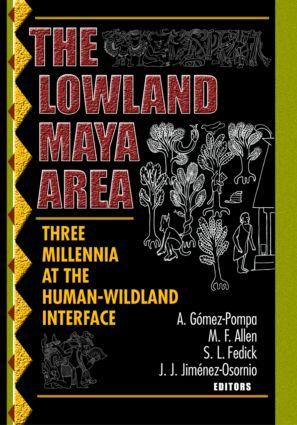
Zustellung: Fr, 08.08. - Do, 14.08.
Versand in 3-4 Wochen
VersandkostenfreiBestellen & in Filiale abholen:
Integrating history, biodiversity, ethnobotany, geology, ecology, archaeology, anthropology, and other disciplines, The Lowland Maya Area is a valuable guide to the fascinating relationship between man and his environment in the Yucatá n peninsula. This book covers virtually every aspect of the biology and ecology of the Maya Lowlands and the many ways that human beings have interacted with their surroundings in that area for the last three thousand years. You'll learn about newly discovered archaeological evidence of wetland use; the domestication and use of cacao and henequen plants; a biodiversity assessment of a select group of plants, animals, and microorganisms; the area's forgotten cotton, indigo, and wax industries; the ecological history of the Yucatá n Peninsula; and much more. This comprehensive book will open your eyes to what we can learn from the Maya people? people who continue to live on their native lands, integrating modern life with their old ways and teaching valuable lessons about human dependence on and management of environmental resources.
Inhaltsverzeichnis
About the Editors , Contributors , Foreword , Acknowledgments , Part I: Introduction , Chapter 1. Research Challenges for the Lowland Maya Area: An Introduction , Part II: The Biological and Physical Environment , Chapter 2. The Changing Global Environment and the Lowland Maya: Past Patterns and Current Dynamics , Introduction , Past Environments and the Yucatá n Peninsula , The El Edé n Tropical Seasonal Forest: Current Ecosystem Structure , Ecosystem Dynamics: Current versus Past , Current and Projected Environmental Change and the Yucatá n Peninsula , Conclusion , Chapter 3. In the Beginning: Early Events in the Development of Mesoamerica and the Lowland Maya Area , Introduction , Geologic History , Climatic History , Vegetational History , Conclusion , Chapter 4. Paleolimnological Approaches for Inferring Past Climate Change in the Maya Region: Recent Advances and Methodological Limitations , Introduction , Theoretical Basis for Isotope-Based Paleoclimate Studies , Choosing a Study Site , Complementary Sediment Proxies , Results and Discussion , Chapter 5. Rhythms of Precipitation in the Yucatá n Peninsula , Introduction , Experimental Details , Normal Conditions for the Yucatá n Peninsula , Yucatá n in the Context of SPI-12 of All Mexico , Periodicity , Typical Patterns , Conclusion , Chapter 6. Structure and Diversity of the Forests at the El Edé n Ecological Reserve , Introduction , Study Area , Methods and Materials , Results , Discussion , Chapter 7. Hydrogeology of the Yucatá n Peninsula , General Geology of the Northern Yucatá n Peninsula , Soils , Regional Hydroge
Produktdetails
Erscheinungsdatum
18. September 2003
Sprache
englisch
Seitenanzahl
660
Herausgegeben von
Scott Fedick, Michael Allen, Juan Jim?nez-Osornio, A. Gomez-Pompa
Verlag/Hersteller
Produktart
kartoniert
Gewicht
1066 g
Größe (L/B/H)
219/149/44 mm
ISBN
9781560229711
Entdecken Sie mehr
Bewertungen
0 Bewertungen
Es wurden noch keine Bewertungen abgegeben. Schreiben Sie die erste Bewertung zu "The Lowland Maya Area" und helfen Sie damit anderen bei der Kaufentscheidung.









